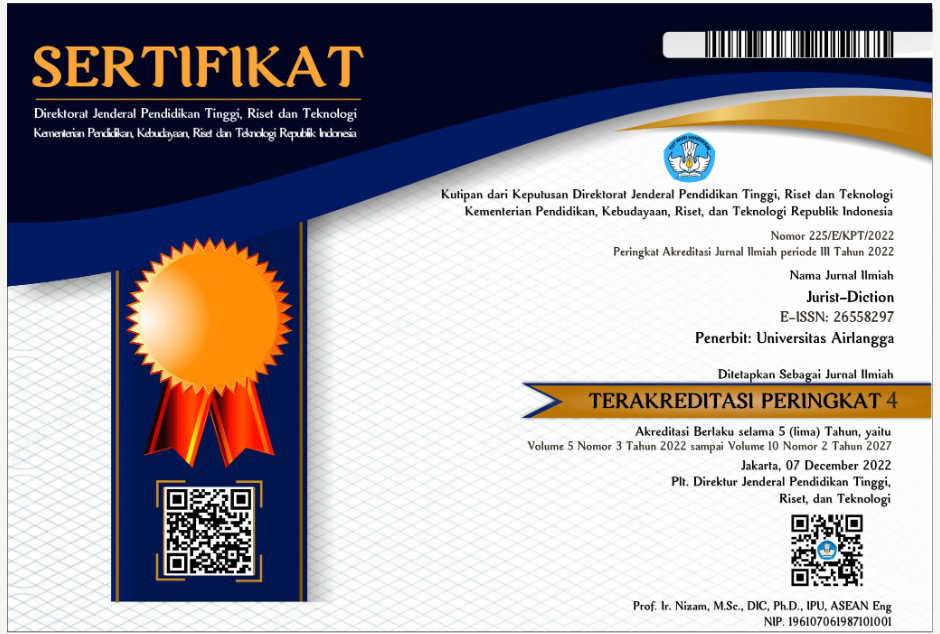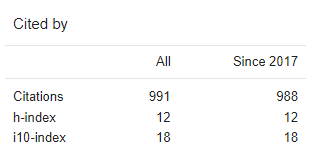Author Guidelines Online Submission Author Guidelines (PDF) Originality Statement
Submissions
Submission Preparation Checklist
As part of the submission process, authors are required to check off their submission's compliance with all of the following items, and submissions may be returned to authors that do not adhere to these guidelines.-
The submission has not been previously published, nor is it before another journal for consideration (or an explanation has been provided in Comments to the Editor).
-
The submission file is in OpenOffice, Microsoft Word, RTF, or WordPerfect document file format.
-
Where available, URLs for the references have been provided.
-
The submission article has been in accordance with Jurist-Diction's Guidelines.
-
The text adheres to the stylistic and bibliographic requirements outlined in the Author Guidelines, which is found in About the Journal.
-
If submitting to a peer-reviewed section of the journal, the instructions in Ensuring a Blind Review have been followed.
Copyright Notice
Jurist-Diction (p-ISSN 2721-8392, e-ISSN 2655-8297), published by Universitas Airlangga, is licensed under a Creative Commons Attribution 4.0 International (CC BY 4.0) license.
Authors who publish with this journal agree to the following terms:
- This Licence allows others to share the work with an acknowledgement of the work’s authorship and initial publication in this journal.
- Authors have obtained all necessary permissions for the reproduction of any third-party copyright materials included in submissions.
- Authors are permitted and encouraged to post their work online (e.g., in institutional repositories or on their website) prior to and during the submission process, with an acknowledgement of its initial publication in this journal. This can lead to productive exchanges, as well as earlier and greater citation of published work.
Note: As of Volume 5, No. 1 (2022), Jurist-Diction has transitioned from a CC BY-NC-SA license to a CC BY 4.0 license.
Privacy Statement
The data collected from registered and non-registered users of this journal falls within the scope of the standard functioning of peer-reviewed journals. It includes information that makes communication possible for the editorial process; it is used to informs readers about the authorship and editing of content; it enables collecting aggregated data on readership behaviors, as well as tracking geopolitical and social elements of scholarly communication.
This journal’s editorial team uses this data to guide its work in publishing and improving this journal. Data that will assist in developing this publishing platform may be shared with its developer in an anonymized and aggregated form, with appropriate exceptions such as article metrics. The data will not be sold by this journal. The authors published in this journal are responsible for the human subject data that figures in the research reported here.
This journal collects data from both registered and non-registered users as part of its standard operations as a peer-reviewed publication. The information gathered facilitates editorial communication, informs readers about authorship and content editing, and helps analyze aggregated readership behaviors, as well as track geopolitical and social dynamics in scholarly communication.
The editorial team utilizes this data to enhance the journal's publication processes and overall quality. Anonymized and aggregated data may be shared with the platform developer to support platform improvements, with limited exceptions such as article-specific metrics. This journal does not sell user data. Authors are solely responsible for ensuring the ethical handling of human subject data included in their published research.
Those involved in editing this journal seek to be compliant with industry standards for data privacy, including the Indonesian Data Protection Law provision for “data subject rights” that include (a) breach notification; (b) right of access; (c) the right to be forgotten; (d) data portability; and (e) privacy by design.



















